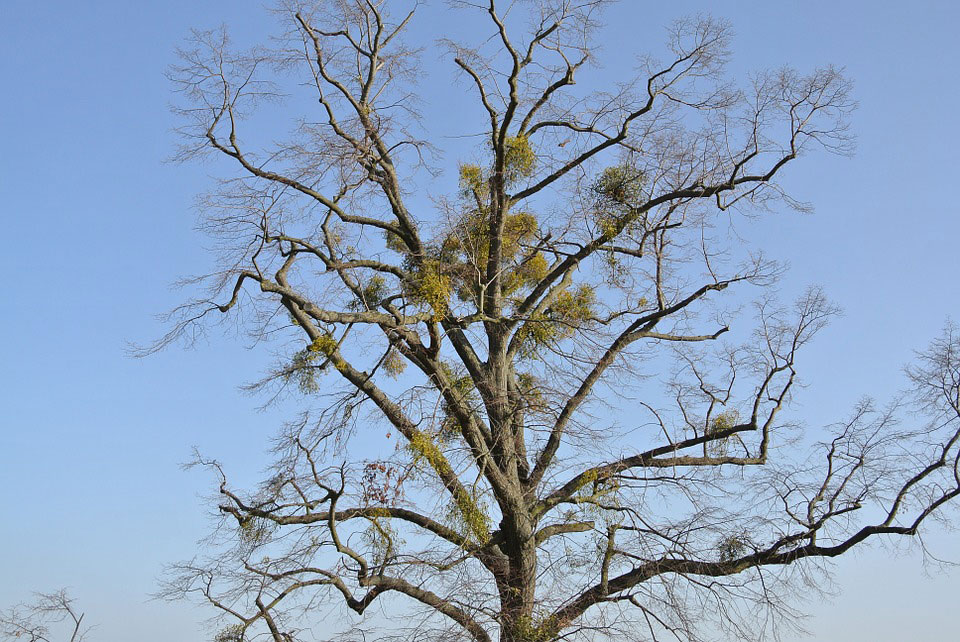Most people are familiar with mistletoe because of its universal presence during the holiday season. The charming little tradition goes that an unmarried woman can stand beneath mistletoe and is fair game for any unmarried man to sneak up and steal a kiss. For each kiss delivered, one mistletoe berry must be plucked from the plant, and when the berries are all gone, no more kissing is allowed. Of course, there are a thousand variations of this old tradition, most of which pay no attention to how many berries remain on the plant.
Mistletoe has a much different reputation among horticulturists and tree enthusiasts. In its mature form, mistletoe is often parasitic, intertwining its roots among the vascular system of a tree and sucking out needed water and nutrients to survive. Mistletoe can perform photosynthesis to produce its own food, but requires water and nutrients from the host plant, which will often cause harm. Mistletoe doesn’t quite kill off a host tree, but it can leave the tree weak enough that it then becomes susceptible to other types of disease.
How mistletoe spreads and affects a host plant
Mistletoe seeds are often spread by birds, squirrels and/or wind. Three years are required before a mistletoe plant becomes mature enough that it can produce seeds. This means that if mistletoe is removed at least every two years, there will be no way for it to reach a sufficiently mature age to develop seeds and propagate. Once it begins producing seeds (and this only refers to female plants), they can be spread by all kinds of birds who eat the berries and then pass out the seeds. The seeds can also be dropped from birds’ mouths and stick to a tree limb, where they might then germinate into a new plant. Most tree species are susceptible to mistletoe.
What can be done about mistletoe?
As mentioned above, in order to prevent the spread of mistletoe, it is worthwhile to prune it away from its host at least every two years, so that it is unable to reach the age at which it can produce seeds. One thing which should be avoided when trying to manage mistletoe plants is using herbicides, because these are likely to harm the tree host as well, and may cause more damage than the mistletoe itself.
When there are significant infestations of mistletoe, it may be necessary to prune the plants away from their hosts every year, and then to take steps to revitalize the host trees. Fertilizing and strategic mulching and watering will generally help to restore vitality to a tree which was formerly infected by mistletoe.
Another option is applying a defoliant to any mistletoe growth which is affecting your trees. Be advised though, this can only be done in the wintertime when host trees are dormant, because any defoliant which kills the roots of a mistletoe plant can also kill off at least that section of a host tree.
Hildebrandt Tree Tech recommends pruning of mistletoe as the preferred method of control.
Call Hildebrandt Tree Tech For A Professional Assessment
Do you need help dealing with mistletoe in your trees? Contact Hildebrandt Tree Tech today through our online contact form or by calling 806-441-7722. With four decades of experience, Hildebrandt Tree Tech provides services including trimming and pruning, tree removal, stump grinding, plant health-care measures, and more.






